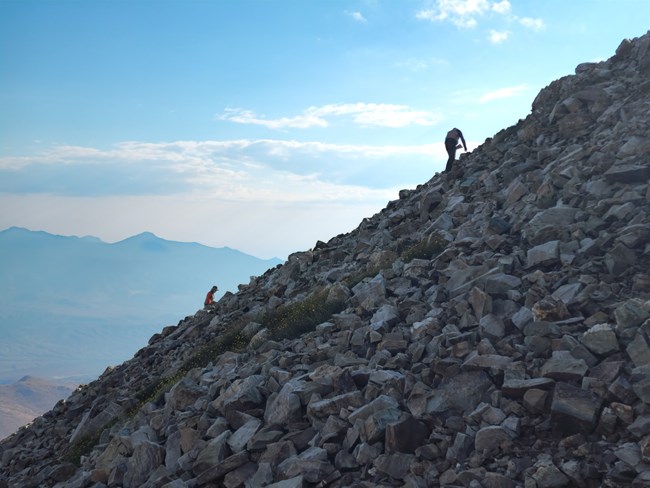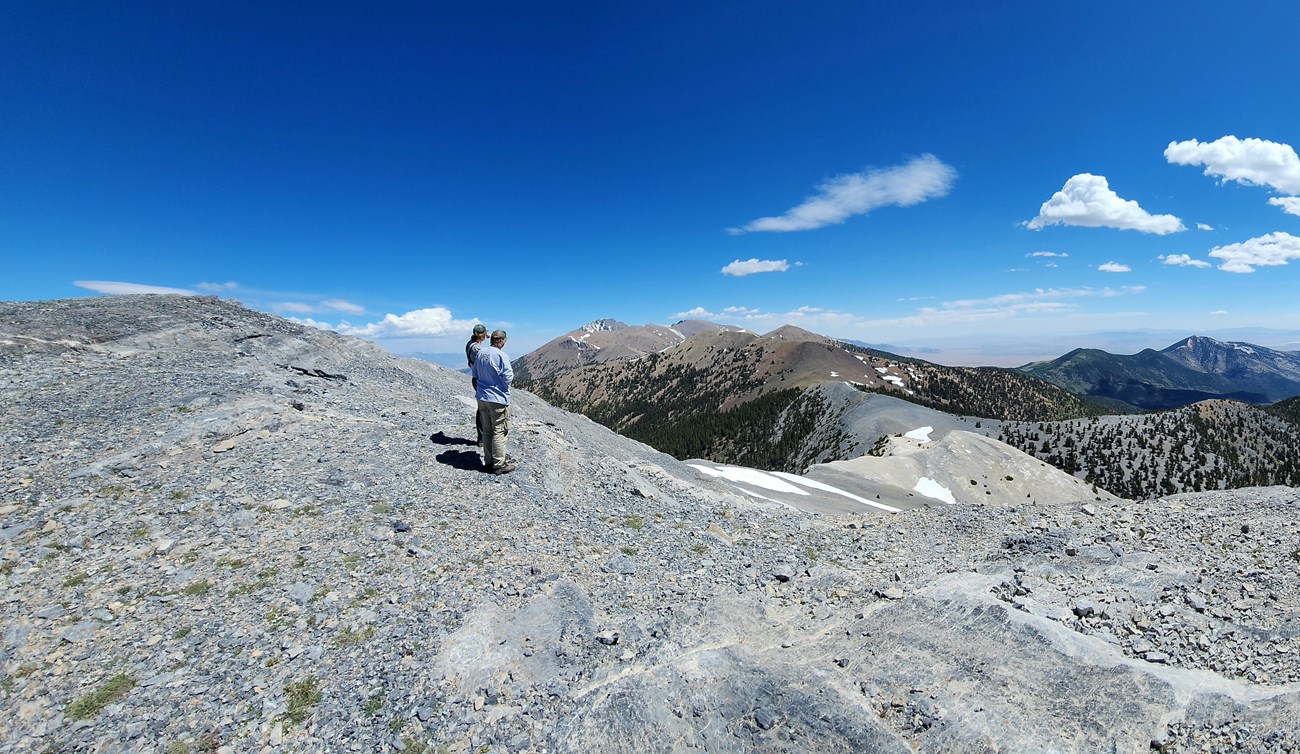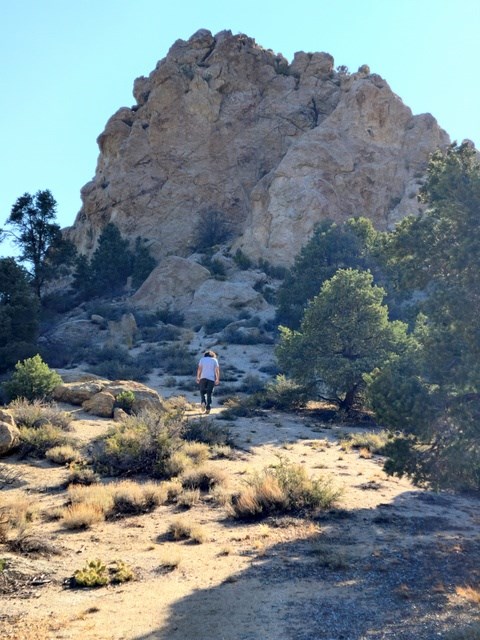Part of a series of articles titled The Midden - Great Basin National Park: Vol. 24, No. 2, Winter 2024.
Article
Finding a Sense of Place
This article was originally published in The Midden – Great Basin National Park: Vol. 24, No. 2, Winter 2024.

NPS/E. Greer
In the summer of 2024, I was hired as a part of the resource management division at Great Basin National Park. During that time, I was privileged to see some of the most amazing (and least visited) parts of the park.
As part of the vegetation team here at Great Basin, I was often sent to obscure corners of the park that are often out of the way, hard to get to, or simply inaccessible to most. I was usually on the hunt for weeds, but also doing habitat restoration, seed collection, and vegetation surveys. One of many special experiences for me was doing alpine plant surveys in July with the GLORIA (Global Observation Research Initiative in Alpine Environments) survey, I remember the effort it took hiking to the peaks of Buck and Bald Mountains, struggling with altitude sickness, and being run off the mountain by lightning storms, all while trying to document changes in alpine ecosystems of the park. Despite the struggle, once we got to the top it was an amazing and special experience to look down at the landscape below while sitting among the rare wildflowers at 11,000 feet, in a spot most people wouldn’t go.
For seasonal staff it can be difficult to leave most of what we know behind, and to connect to and find a sense of belonging when coming to a new park for the first time. Being a student of landscape ecology, I tend to think in terms of Place and Scale. Being interested in exploring a sense of place and knowing I’m only a small part of the story here at Great Basin, I realized while writing this article and reflecting on my own experiences, that there’s a wider scale than just my own experiences. Since I’m not the only member of the team here at Great Basin, I’ve decided to ask my colleagues about their experiences, connecting, and what places in the park held a special meaning for them.

NPS/E. Greer

NPS/E. Greer
Often, we develop connections to places through what we went through to get there, and the experiences and memories we’ve established once we arrive. Even though some of the places we try to get to can be the cause of stress and anxiety along the way, those challenges are often the most memorable.
“I often wondered when the last time a human had actually stepped foot in the same location that I was.” says Jonathan Reynolds, Fisheries Biologist. “After all, I can't think of any reason for a visitor to venture to some of these locations unless they were purposely following the stream to source as I was. It continued to blow my mind that I could follow a stream from the park boundary to its spring source in as little as one day sometimes. Many of the spring sources would take me to locations far from trails to beautiful, lush green seeps and miniature wetlands hidden away from any recent human intervention. These locations, where water popped up from the ground or seeped from a hillside supporting moss, watercress, and a variety of wildflowers were hidden gems; especially when considering how important and rare water is in this desert landscape.”
It can be difficult to connect to new places at times, especially for seasonal staff, who may be living and working somewhere new every year. But we as humans have an amazing ability to find these connections by finding something unique and relating to past experiences, or by having and sharing new experiences with new places. By the end of it all it can even be hard to leave when our season is done.
Last updated: December 9, 2024
